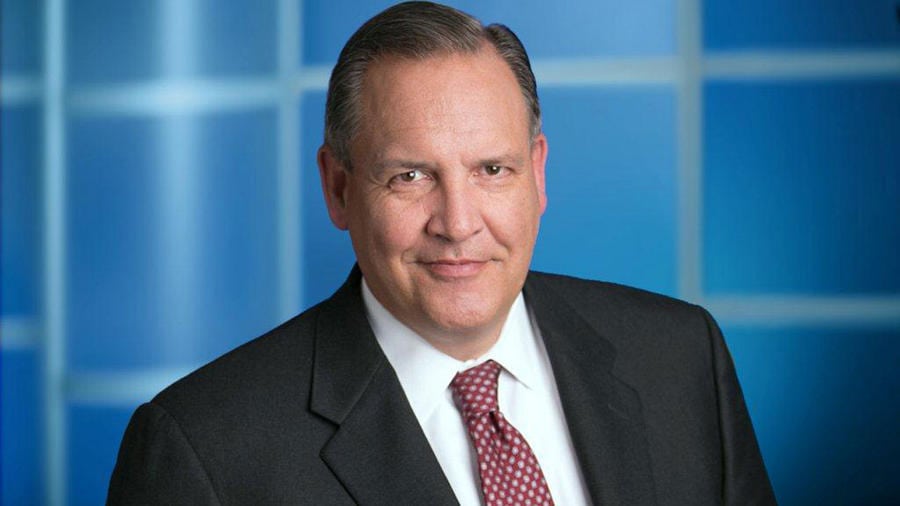 |
| United Technologies Corporation CEO Gregory Hayes. Photo: UTC |
[Avionics Today 07-22-2015] After reporting a $9 billion sale of its Sikorsky Aircraft unit to Lockheed Martin earlier this week, United Technologies Corporation (UTC) Chief Executive Officer Gregory Hayes sat down with analysts and journalists yesterday to speak instead on the company’s less-than-impressive second quarter performance. The company released a disappointing earnings report with sales down 5 percent from last year to $16.3 billion. As a response, UTC has cut forecasted sales by nearly $1 billion less than anticipated, to an estimated $57 billion for the year, including sales for its aerospace systems division, for which it says sales are lackluster.
“To say that I’m disappointed would be a significant understatement. We’re all disappointed in having to take the guidance down, and we talked back in June about softness in the aerospace aftermarket at [UTC Aerospace Systems] UTAS,” said Hayes.
The company had expected growth in a number of areas that did not occur, including new aircraft sales for the Boeing 787 Dreamliner, for which UTC provides electrical and air management systems as well as Maintenance, Repair and Overhaul (MRO) services.
“We had expectations for a 10 percent increase, assuming that some of that strength which we saw through 787 would continue. We had assumed that in spite of fewer operators taking new aircraft in 2015, we would see almost similar level of 787 activity in 2015, as we saw in 2014. That’s obviously not happened at this point,” said Hayes, noting that the company will likely be down roughly 40 percent of its projected numbers for the 787.
A slower-than-expected roll out of other new aircraft programs also contributed to the dip in numbers, including the Airbus A320neo, for which UTAS supplies flight control actuation systems, cockpit controls, data sensors control systems, among others, as well as Bombardier’s C Series, for which the company supplies the engine control system and other components.
Sales in the commercial aerospace aftermarket were up 1 percent at UTC subsidiary Pratt & Whitney, but it wasn’t enough to offset what it cites as currency depreciation, weak demand and, ultimately, poor planning.
“I would tell you, probably the root cause is we pushed the aerospace systems guys to have a plan that was going to be up roughly $300 million for the year and, in order to do that, they had to push the aftermarket guys to deliver a much bigger number,” said Hayes. “And, at the end of the day, I don’t think there was a strong basis in that aftermarket assumption, around how we were going to get there. Again, they were looking at trends, but … we didn’t question enough the assumptions underlying how they were going to get there. And so I would tell you that’s a miss on my part — that’s a miss on our part from a planning perspective, that we didn’t dig deep enough last year when these plans were getting put together,” he added.
Still, Hayes expects that aftermarket sales will bounce back quickly with sales of its Geared TurboFan (GTF) engines, which it has plans to ship 7,000 of over the next 10 years, bringing Pratt & Whitney’s top line from $15 billion to $25 billion.
Analyst Richard Aboulafia, vice president of analysis at the Teal Group, agrees that the commercial aftermarket segment is bound to bounce back. “[UTC] will recover,” he said. “Aftermarket goes up and down with stocking and re-stocking and utilization is pretty good in the industry right now.”
Going forward, the company is looking toward its profits from the Sikorsky sale to get the company back on track — a sale that Aboulafia said has been a long time coming.
“Sikorsky never really was a good fit for their company as a platform maker,” he explained. “Here’s a company that’s 85 percent military and 90 percent platforms — it was the odd guy out. They’ve owned it since 1979 and up until now it was growing at a really nice pace so it’s hardly surprising they kept it this long; but in terms of it being sold, the market isn’t terribly surprised.”
The $7.1 million in capital the company will make after taxes, should regulators approve the sale, will prove crucial to recovery, however. “We’ve got, in my view, six months while we’re working on closing the Sikorsky transaction, to figure out what all of those actions are. But my goal would be to use the gain to induce significant additional restructuring,” said Hayes.
Outside of ambitions to restructure the company, however, Hayes and his team announced little in the way of actual plans going forward. “I’ve asked the guys to take a very hard look at big structural cost reductions. I don’t have a plan today of what we’re going to do,” he said.
After significantly slashing the guidance, however, with projected profits down between $25 and $75 million in the aerospace market, the CEO mustered confidence going forward.
“What we have tried to do today is to put a stop on the downside, and I think the guidance that we’ve given for both Otis and for the aerospace systems group is guidance we feel confident that we can hit. And I’m tired of delivering bad news and so we’ve probably been more aggressive on the downside, because we don’t want to overpromise and under-deliver,” he said.